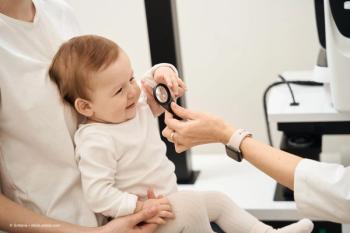
- Modern Retina July and August 2025
- Volume 5
- Issue 3
From bench to bedside: Evolving realities of gene therapy for inherited retinal diseases
In recent years, gene therapy has emerged from the shadows of theoretical potential into the spotlight of clinical reality. The approval of voretigene neparvovec-rzyl (Luxturna) marked a historic moment, making it the first gene therapy for an
Voretigene neparvovec-rzyl: A milestone
Voretigene neparvovec-rzyl targets biallelic mutations in RPE65, which cause a form of Leber congenital amaurosis and early-onset retinitis pigmentosa. These patients often experience severe visual impairment from early childhood, with progressive visual field loss leading to progressive functional blindness.
In 2019, our center became the first in German-speaking Europe to begin clinical treatments with voretigene neparvovec-rzyl. Since then, we have treated a growing number of pediatric and adult patients. A special focus of our department is on the treatment of children, particularly preschool-aged patients, where early intervention is critical for functional benefit and long-term visual development.
The clinical outcomes have been encouraging. Children and young adults report improved light sensitivity and navigational vision within weeks of the bilateral subretinal injection, confirming the translational potential of preclinical findings. However, the therapy is not without limitations. It does not halt retinal degeneration, may lead to progressive chorioretinal atrophy, and is most effective when applied early—when a sufficient number of viable photoreceptors and retinal pigment epithelial cells remain.
Gene therapy: Lessons learned
One of the key challenges in bringing gene therapy to the clinic is operational rather than scientific. The need for a highly specialized infrastructure—ranging from genetic diagnostics and multidisciplinary patient selection to surgical expertise and postoperative care—cannot be overstated. We have established a dedicated internal pathway that integrates clinical genetics, pediatric ophthalmology, imaging specialists, and our surgical team to ensure optimal patient selection and outcomes.
Equally important is patient education and expectation management. Gene therapy is not a cure but rather a functional intervention, and setting realistic goals is essential for long-term satisfaction and follow-up adherence.
Expanding the pipeline: ABCA4 and beyond
Although voretigene neparvovec-rzyl is a landmark achievement, it addresses only one of more than 270 genes implicated in IRDs. An area of intense focus at our center is ABCA4-associated retinal degeneration such as Stargardt disease, the most common form of juvenile hereditary retinopathy.
We are now preparing to initiate a phase 1 clinical trial investigating gene therapy for ABCA4-related disease, supported by a novel adeno-associated virus (AAV)–based dual vector technology developed by VeonGen Therapeutics (formerly known as ViGeneron). This platform was codeveloped by Stylianos Michalakis, a professor at the University Eye Hospital of LMU Munich and one of the company’s cofounders. The new vector system—designed to address the delivery limitations of conventional AAVs—enables efficient transduction of photoreceptors and is capable of carrying larger transgene payloads such as ABCA4, which traditionally exceeds the packaging limits of single AAVs. These next-generation vectors represent a key innovation in overcoming one of the longstanding barriers in retinal gene therapy.
The evolving landscape of IRD gene therapy
Beyond RPE65 and ABCA4, the gene therapy landscape for IRDs is expanding rapidly. Several promising candidates are progressing through clinical trials, including the following:
- RPGR-targeted therapies for X-linked retinitis pigmentosa, with multiple AAV-based candidates in phase 2/3 trials showing encouraging safety and efficacy signals
- Investigational programs for Usher syndrome type 1b targeting MYO7A, one of the largest ocular genes, using dual-vector or nonviral approaches to overcome size limitations
- X-linked retinoschisis gene replacement therapy, aiming to improve retinal architecture and visual function in young male patients
- Ongoing work in Stargardt disease and cone-rod dystrophies, including RNA-based and genome editing strategies, further diversifying the field
These developments illustrate a shift from isolated proof-of-concept therapies toward platform-based innovation, tailored delivery systems, and the long-term goal of durable, mutation-specific interventions.
Conclusion: Turning promise into progress
The journey from gene discovery to approved therapy has been long and complex, but the field is now at a transformative point. The successful deployment of voretigene neparvovec-rzyl, especially in young children, demonstrates what is possible when rigorous science, regulatory alignment, and multidisciplinary care converge.
As we move into trials for more genetically and technically challenging conditions such as Stargardt disease, innovation in vector design and data infrastructure will be central. For clinicians and researchers alike, gene therapy in inherited retinal diseases is no longer a promise of the future—it is a growing reality, driven by collaboration, commitment, and clinical courage.
Siegfried G. Priglinger
Priglinger is associated with the University Eye Hospital of Ludwig Maximilian University Munich in Germany.
Articles in this issue
3 months ago
ASRS 2025: Geographic atrophy on display4 months ago
Can AI explain AMD to patients?Newsletter
Keep your retina practice on the forefront—subscribe for expert analysis and emerging trends in retinal disease management.















































